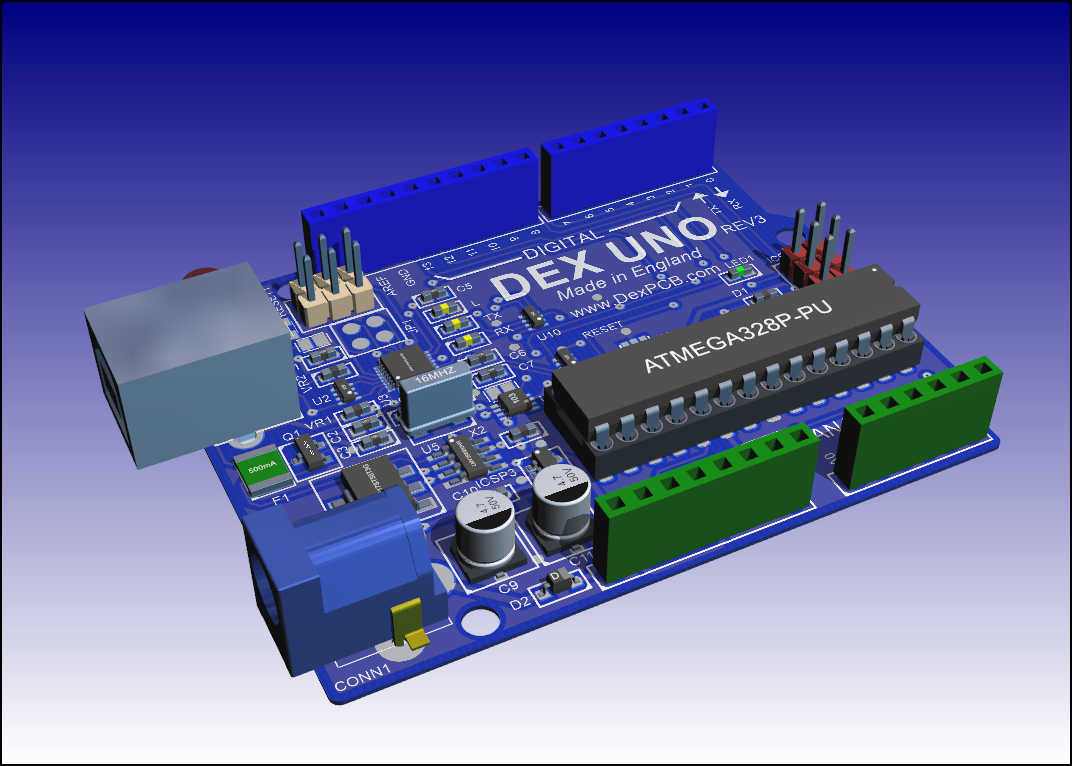Solder mask or solder resist is a thin lacquer-like layer of polymer that is usually applied to the copper traces of a printed circuit board (PCB) for protection against oxidation and to prevent solder bridges from forming between closely spaced solder pads. A solder bridge is an unintended electrical connection between two conductors by means of a small blob of solder. PCBs use solder masks to prevent this from happening. Solder mask is not always used for hand soldered assemblies, but is essential for mass produced boards that are soldered automatically using reflow or solder bath techniques. Once applied, openings must be made in the solder mask wherever components are soldered, which is accomplished using photo-lithography. Solder mask is traditionally green but is now available in many colors.
Solder mask comes in different media depending upon the demands of the application. The lowest-cost solder mask is epoxy liquid that is silk-screened through the pattern onto the PCB. Other types are the liquid photoimageable solder mask (LPSM) inks and dry film photoimageable solder mask (DFSM). LPSM can be silkscreened or sprayed on the PCB, exposed to the pattern and developed to provide openings in the pattern for parts to be soldered to the copper pads. DFSM is vacuum laminated on the PCB then exposed and developed. All three processes go through a thermal cure of some type after the pattern is defined.
In electronic design automation, the solder mask is treated as a layer of the printed circuit board, and is described as a Gerber file like any other layer, such as the copper and silkscreen layers.
The solder mask is generated by default and covers all the PCB except pads and no solder mask areas. There is no explicit Solder Mask layer in AutoTRAX DEX. The mask is automatically generated for the top and bottom sides of the PCB. Normally you would not need to make any changes yourself.
Color Me Beautiful
For a seemingly endless time, solder-mask has been green and only green. But all that has started to change.
There is a trend towards clear or colorful electronics, in everything from toasters to blenders and from phones to computers. With OEMs trending toward clear appliances and electronics, boards are taking on much more of a personality. Any marketing professional will tell you if you're going to see the guts of something, it better look interesting and it had better be cool.
Today there are a variety of commercially available colors from which to choose. Alternative colors certainly aren't new. But the past several years have seen a growing use of colors other than green, primarily driven by assemblers and OEMs.
